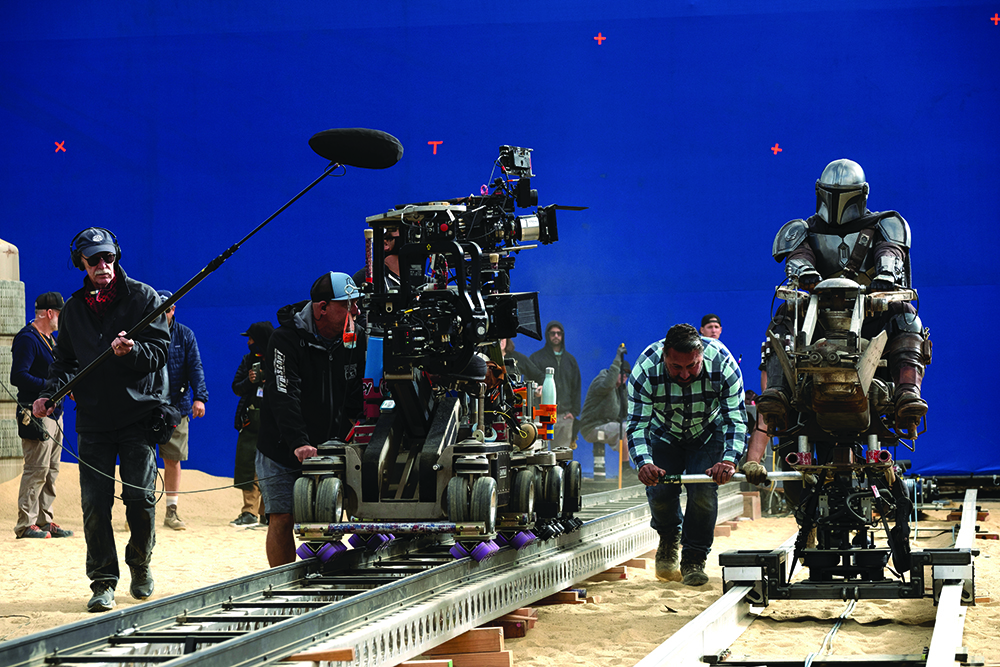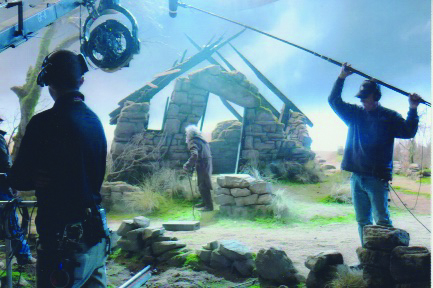by Randy Johnson

A very well-known director once characterized what a Boom Operator is. He said, “I’m not sure people really understand what a unique and critical role the Boom Operator occupies on a film set. Not only is this person responsible for capturing one of the most crucial aspects of a performance (under circumstances that are never ideal), they have a physically intimate relationship with every speaking cast member.
“In order to apply a mic, they have to touch them, often in ways that require privacy, and a Boom Operator without the social skills to deftly manage that process is an unemployed Boom Operator. Additionally, I don’t know any other crew member so close to the action whose attempts to do their job well are continually challenged. (Do you really have to be there?! Your mic almost dipped into frame! etc.) Often by people who should know better. Navigating this sort of negative attention and staying focused is another level of skill set.”
In earlier days on the set, long before wireless mics were prevalent or viable, the boom was the collector of the dialog. Hard light was the norm, which added an extra layer of stress. You had to capture the performances; there was no other option. So, with shadows and reflections showing up frequently in the shot, the Boom Operators’ requests for cutters and shelves at critical moments were crucial. With the advent of softer light digital filming, the challenges are still there, but more manageable.
When I started in the ’70s, the Fisher boom was the normal tool to use on every set, with the exception of certain tough locations where we employed the fishpole. It was (and still is) a great tool and at the time recognized by all crew as an integral part of the equipment on the set. I don’t exactly know when that perception changed. Maybe it was in the ’80s, when an influx of young Boom Operators and a lack of older operators were not doing their due diligence in teaching the inner workings of a great tool. Once that perception changed, even with a Fisher sitting on the set, many young boompeople would opt for the fishpole. However, we know that all things evolve. Since wireless mics have advanced so much, the industry’s “time is money” perspective has brought the use of wireless mics to the forefront.
Now, the norm (at least in television) is to wire every speaking actor. My personal experience with a number of feature directors is that they still want the boom mic sound, and will strive to help the production sound team achieve that. Wireless mics are certainly used in some circumstances, but are not the norm.
Still, in all narrative efforts, I’m pretty sure that all production sound teams are striving every day to preserve the boom track. The life and air around the dialog should be essential to the auditory and visual experience. However, people on the set sometimes see it as either/or.

A couple of years ago, I worked on a show booming a scene that employed a 40-foot Technocrane. Between the second or third take, we took a moment to make some lighting changes. One of the PA’s came out and asked me what I was doing forty feet out with camera at the end of the crane, when video village and everyone was so far back. I said, “Just doing my job.” He said, “Aren’t the two actors wired?” “Yes,” I said, “but since we have a moment, I’ll explain. Yes, the two actors have wireless mics on. However, because the lady getting out of the truck has a noisy wardrobe and the other actor is leaning his chest against the truck, the boom will sound much better.” He said he always thought it was one or the other.
My production sound opinion might be contrary to some, but I think post sound is somewhat complicit in this movement to wireless.
I worked on some reshoots for a show a couple of years ago. Two cameras, two actors. Medium close-up of both. The Production Mixer and I agreed that using two booms was the way to go. We thought we turned in quality tracks. A week later, the Production Mixer was inundated with questions from post, asking, “Where are the ISO’s?” To which the Mixer replied, “Those are the ISO’s!” Post said, no, the iso’s should be the wireless mics! That was the redundancy that they were looking for because that’s what they’ve been used to.
So, as we move forward in our ongoing daily attempts to capture the performances with whatever means necessary, the key will always be clarity of the spoken word, of course. That said, with my possibly dinosaur-ish affection for the boom track, I know what I’ll be lobbying for.
Roll sound!